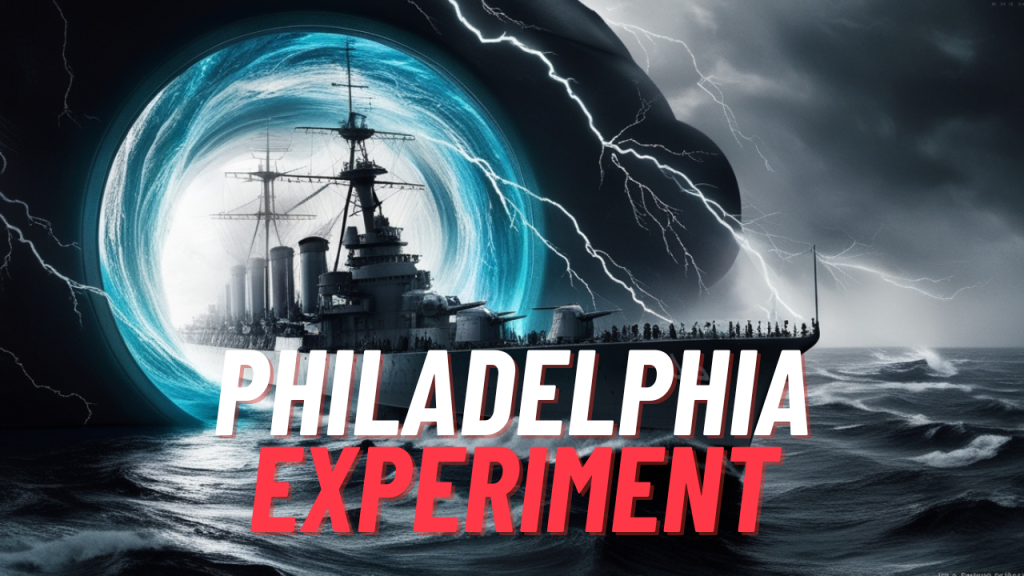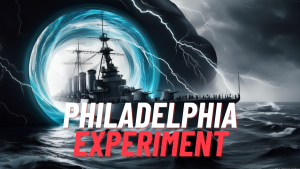
The Philadelphia Experiment: A Controversial Urban Legend
The Philadelphia Experiment is a widely debated urban legend. It claims that the U.S. Navy conducted a secret experiment during World War II to make the USS Eldridge, a naval destroyer, invisible to enemy radar. According to the story, this event occurred on October 28, 1943, at the Philadelphia Naval Shipyard. Supporters of the theory believe that advanced technology involving electromagnetic fields caused the ship to disappear from the harbor.
The story gained popularity in the 1950s, largely due to the work of Morris K. Jessup, an author and UFO enthusiast. In his book, The Case for the UFO, Jessup connected the experiment to theories involving extraterrestrial technology. Some accounts from alleged witnesses describe strange phenomena, including crew members suffering from severe physical side effects like paralysis or being fused to the ship.
Lack of Credible Evidence
Despite its intriguing narrative, there is no credible evidence to support the claims of the Philadelphia Experiment. Historians and researchers largely dismiss it as a hoax or an urban legend. Many believe it was fueled by Cold War paranoia, science fiction, and the public’s fascination with military secrecy. The U.S. Navy has denied any such experiment occurred. Extensive investigations have also failed to uncover any reliable documentation or testimonies that would lend credibility to the story.
The Philadelphia Experiment has nonetheless inspired several films, books, and documentaries. It continues to thrive as a conspiracy theory, even though it serves as a reminder of how easily misinformation can spread, especially in uncertain times.
Theories Behind the Philadelphia Experiment
Several theories attempt to explain the alleged events surrounding the Philadelphia Experiment. These ideas range from advanced science to supernatural occurrences.
Unified Field Theory and Cloaking Technology
One of the central theories suggests that the experiment involved the application of a unified field theory. Proponents argue that the U.S. Navy was attempting to manipulate electromagnetic fields to make the USS Eldridge invisible. They believe that by creating a strong enough electromagnetic field, light could be bent around the ship, rendering it undetectable to enemy radar. However, there is no scientific evidence to support this claim.

Teleportation and Time Travel
Another theory claims that the USS Eldridge was not only made invisible but also teleported from Philadelphia to Norfolk, Virginia. Advocates of this idea suggest that the experiment accidentally opened a portal, causing the ship to travel through space—and possibly time. This theory draws on quantum mechanics and science fiction but lacks any factual basis and contradicts established physics.
Mind Control Experiments
Some theorists believe that the Philadelphia Experiment was part of a broader program focused on mind control. They argue that the Navy was investigating how to manipulate human perception and consciousness using electromagnetic frequencies. The aim, according to this theory, was to gain an advantage during warfare by controlling the minds of enemy soldiers. Like the other theories, this one is based on speculation rather than concrete evidence.
Historical Misunderstandings
Skeptics of the Philadelphia Experiment often suggest that the story is the result of historical misunderstandings and misreporting. They argue that rumors and urban legends from World War II were blended with real naval activities to create a sensational story. For instance, discrepancies in the USS Eldridge’s timeline are often cited as proof of a cover-up. However, critics believe these are simply the result of poor historiography and unreliable information.
The Believers’ Perspective
For those who believe in the Philadelphia Experiment, the event represents much more than an urban legend. They argue that the incident demonstrates the hidden capabilities of military research, far beyond what the public understands. To them, the story is a thrilling intersection of advanced science, government secrecy, and paranormal events.
Alternative Evidence and Testimonies
Believers often point to anecdotal evidence and eyewitness accounts as proof of the experiment. Some claim to have spoken with former Navy personnel who describe strange occurrences—missing crew members, unexplained technology, and bizarre phenomena. While these testimonies lack scientific validation, they continue to fuel belief in a hidden truth.
Government Secrecy
Supporters of the Philadelphia Experiment theory often cite government secrecy as a reason to doubt official denials. They argue that the military has a history of hiding controversial research, especially during the Cold War. In their view, the lack of verifiable documents is not evidence that the experiment didn’t occur but rather proof of a deliberate cover-up.
Connections to Extraterrestrial Technology
Over the years, some believers have speculated that the experiment involved extraterrestrial technology. They suggest that the scientific principles behind the Philadelphia Experiment could be connected to UFO sightings and alien civilizations. These theories often involve ideas of dimensional travel and time manipulation, adding an extra layer of intrigue to the story.
Cultural Impact

Regardless of the skepticism, the Philadelphia Experiment continues to captivate the imaginations of conspiracy theorists. Its themes of secret military agendas, repressed knowledge, and unexplained phenomena resonate strongly in modern culture. As a result, the story remains a popular topic in books, films, and documentaries.
In a world where conspiracy theories are increasingly common, the Philadelphia Experiment stands out as a unique narrative. It has evolved from mere folklore into a compelling tale about humanity’s quest for knowledge and understanding. For believers, the mystery remains unsolved, continuing to ignite curiosity and drive further exploration into what could be lurking in the shadows of history.





